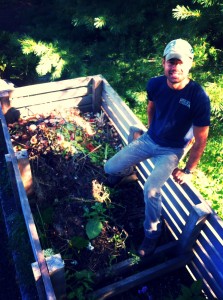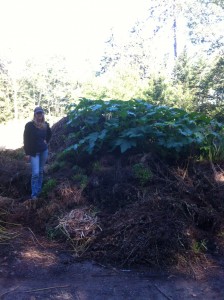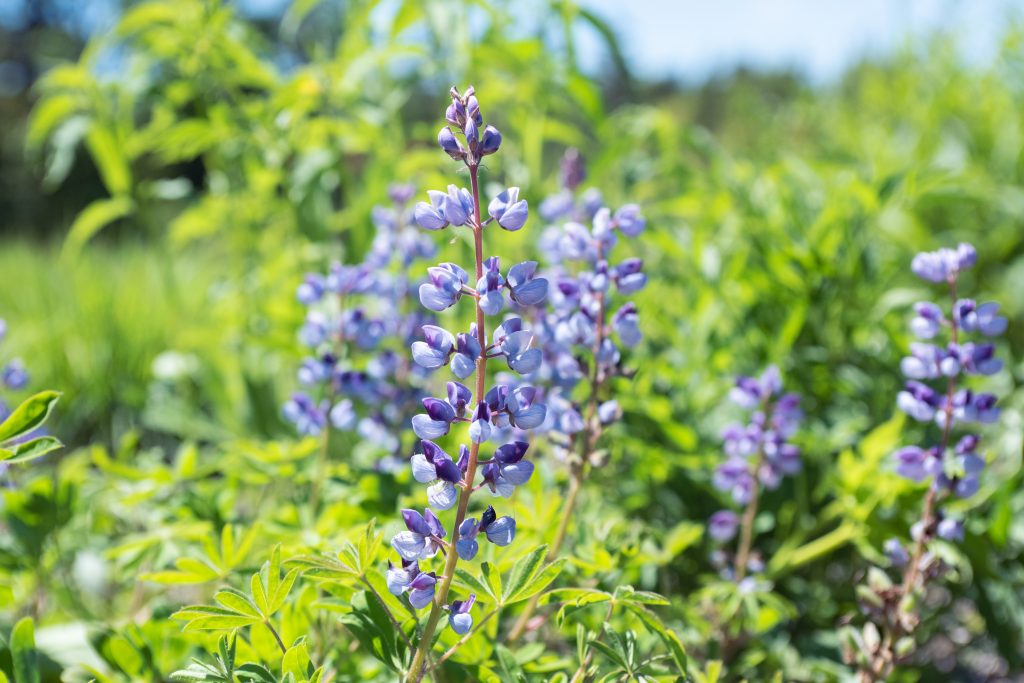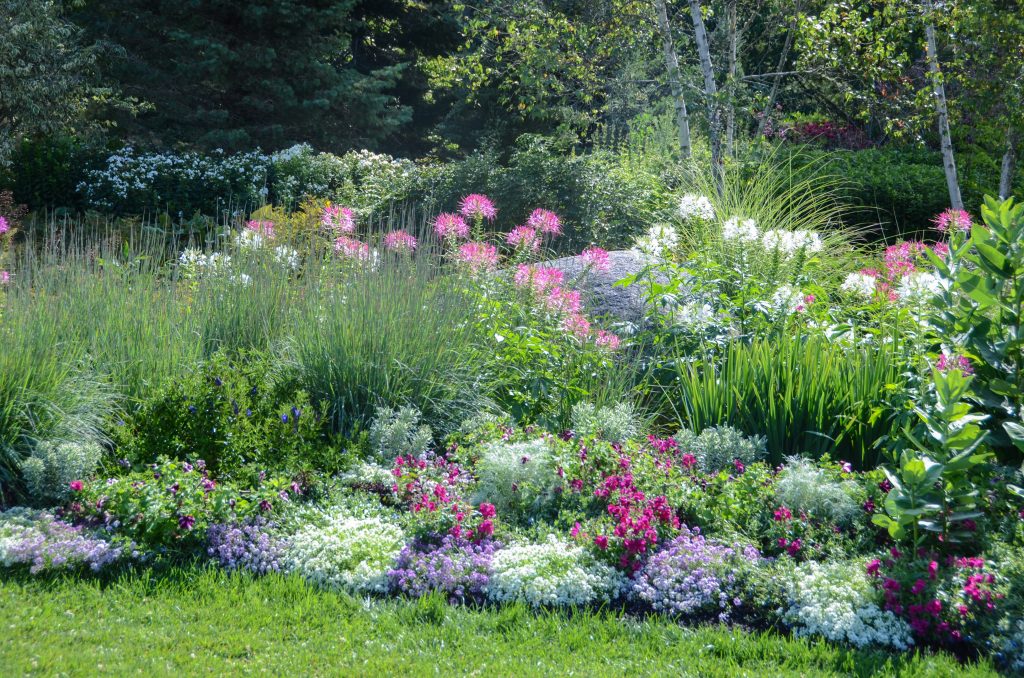Deep in the heart of our jungle here at Coastal Maine Botanical Gardens there is a mammoth-like mound of vegetative waste. At first when you approach its base you are instantly dwarfed in comparison and an eerie sensation washes over you, but this feeling soon morphs to curiosity as you marvel the pile and interpret its purpose. You see, this heap of decaying material will soon be used to supplement life, illustrating the irrefutable beauty of nature’s intrinsic design. In horticulture, we call the product of this naturally occurring process of decomposition “compost.”
Composting is the rapid breakdown of organic materials by soil organisms. This process can heat the pile up to 150 degrees Fahrenheit or more, which kills off many diseases and weed seeds and helps control odors. After consuming the organic materials, these organisms can reduce the volume of a pile by two-thirds resulting in fertile compost that we can then incorporate into our soil. Compost is beloved in horticulture as soil amendment because of its ability to improve soil structure and fertility by allowing the soil to hold more air, moisture, and soluble minerals.
Compost may be phenomenal as a soil amendment, but it does have its downfalls when used in excess. In the past, here at CMBG, we have “top dressed” our plant beds every spring with a mulch (containing compost) called “Nutrimulch.” Consistent application of this mulch has increased the pH of many of our garden beds making them more alkaline and less favorable to some of our most valued specimens (such as our Rhododendron and Blueberry collections). We have begun to correct this issue by applying organic sulfur (to beds containing acidic soil loving plants) and switching to a product called “SuperHumus,” for our yearly spring mulching.
I implore you to experience the wonder of composting in your own yard (if you haven’t already) but I also understand that this process is rather slow and may not produce as much mulch needed for your entire yard. If you need a substantial amount of quality compost I suggest you check out this link.
-Montana Williams, Pearson Horticulture Intern (August 8, 2013)
Signage in our Lerner Garden of the Five Senses gives excellent directions on how to construct your own compost pile:
1. Evenly Layer the “Browns and Greens”
- Browns- dead leaves, straw, wood or bark chips, twigs, non-colored paper and nutshells
- Greens- grass clippings and green leaves and stems, vegetables scraps from the kitchen, and coffee grounds
- Farm-animal manures are also very effective, if available.
- Avoid- human or pet wastes, colored paper, dairy products, meats, fats and greases, coal ashes, or diseased plant wastes. Fireplace ashes can be used in moderation.
2. Aerate the Pile
- The more air that gets into the pile, the faster the pile will compost.
- The best was to get air in is to turn or flip the pile with a pitchfork or tractor every few months.
- Poorly aerated piles smell bad and produce inferior compost.
3. Keep the Pile Moist but Not Wet
- Pre-moisten brown materials if possible to prevent them from sucking up all the water needed for composting.
- It takes 1-2 yeas for the pile to “finish” (be ready to use).
- “Finished” compost should be loose, crumbly and dark.
- Larger piles compost faster because they trap more heat (aim for a pile at least 6 feet wide and tall to start with



